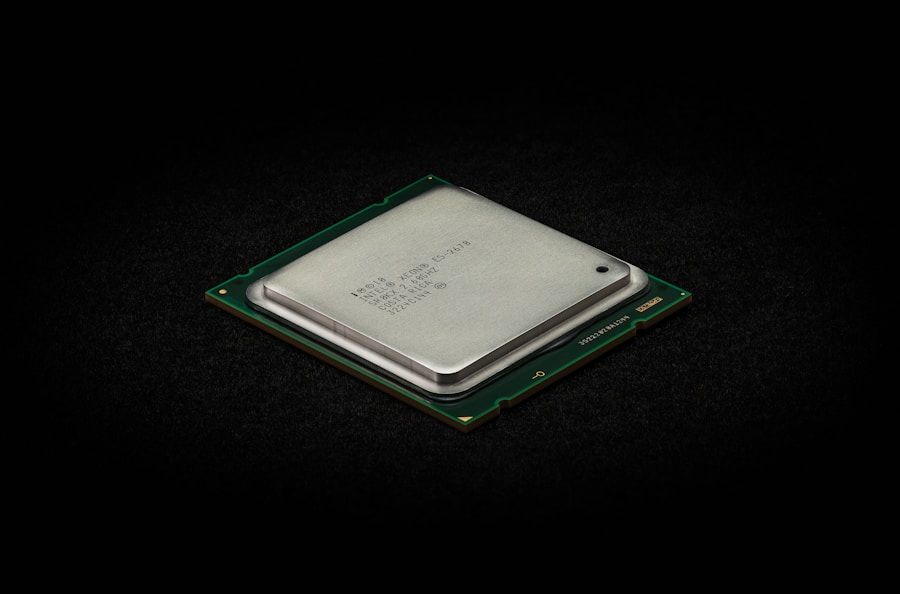As I reflect on the landscape of the tech industry, it becomes increasingly clear that Nvidia has carved out a formidable position for itself. The company, originally known for its graphics processing units (GPUs), has evolved into a powerhouse that influences various sectors, including gaming, artificial intelligence, and data centers. Nvidia’s ability to innovate and adapt has allowed it to maintain a leading edge, making it synonymous with high-performance computing.
The introduction of its CUDA programming model revolutionized how developers approached parallel computing, further solidifying Nvidia’s status as a pioneer in the field. Nvidia’s dominance is not merely a product of its technological advancements; it is also a result of strategic foresight. The company has consistently anticipated market trends and consumer needs, positioning itself at the forefront of emerging technologies.
From the rise of machine learning to the increasing demand for real-time ray tracing in gaming, Nvidia has been quick to respond with cutting-edge solutions. This proactive approach has not only garnered a loyal customer base but has also established Nvidia as a key player in shaping the future of technology.
Key Takeaways
- Nvidia has established dominance in the tech industry through its innovative products and technologies, particularly in the gaming and data center markets.
- Competition from other tech giants such as AMD and Intel has intensified, challenging Nvidia’s market leadership and pushing the company to innovate and adapt.
- Nvidia faces challenges in maintaining its market leadership, including increasing competition, evolving customer demands, and technological advancements.
- Nvidia employs strategies such as investing in research and development, expanding into new markets, and acquiring key companies to stay ahead of the competition.
- Competition has driven Nvidia to continuously innovate and develop new products, leading to advancements in AI, gaming, and data center technologies.
The rise of competition from other tech giants
The Tech Industry’s Shift in Power Dynamics
Nvidia’s supremacy in the tech industry is being challenged by the emergence of strong competitors.
### The Rise of AMD
AMD’s Radeon graphics cards have made significant strides in offering competitive alternatives to Nvidia’s offerings. The introduction of AMD’s RDNA architecture has not only improved performance but has also made high-quality graphics more accessible to a broader audience.
### Intel’s Entry into the Discrete GPU Market
Intel’s recent foray into the discrete GPU market with its Arc series signifies a shift in dynamics that could potentially disrupt Nvidia’s stronghold. As these companies invest heavily in research and development, they are not just competing on price but are also innovating at an unprecedented pace.
### Nvidia’s Response to the Challenges Ahead
This rise in competition compels me to consider how Nvidia will respond to these challenges while maintaining its leadership position.
Challenges faced by Nvidia in maintaining market leadership

Despite its impressive track record, Nvidia faces several challenges that could hinder its ability to maintain market leadership. One significant hurdle is the rapid pace of technological advancement. As competitors introduce new features and capabilities, Nvidia must continuously innovate to stay relevant.
The pressure to deliver cutting-edge products can lead to increased operational costs and potential missteps in product launches, which could tarnish its reputation. Additionally, the global semiconductor shortage has posed significant challenges for Nvidia and the entire tech industry. Supply chain disruptions have made it difficult for companies to meet the soaring demand for GPUs and other components.
As I observe this situation unfold, I realize that Nvidia must navigate these complexities while ensuring that it can deliver products on time without compromising quality. The stakes are high, and any miscalculation could result in lost sales and diminished consumer trust.
Strategies employed by Nvidia to stay ahead of the competition
| Strategies | Description |
|---|---|
| Investment in R&D | Nvidia invests a significant portion of its revenue into research and development, allowing them to continuously innovate and stay ahead in technology. |
| Partnerships and Acquisitions | Nvidia strategically partners with other technology companies and acquires startups to expand its product offerings and stay competitive. |
| Focus on AI and Data Centers | Nvidia has shifted its focus towards artificial intelligence and data center solutions, tapping into high-growth markets and staying ahead of the competition. |
| Product Differentiation | Nvidia continuously differentiates its products through performance improvements, unique features, and software optimizations to maintain a competitive edge. |
| Global Expansion | Nvidia has expanded its presence globally, reaching new markets and customers to increase its market share and stay ahead of competitors. |
In response to these challenges, Nvidia has implemented several strategies aimed at reinforcing its market position. One of the most notable approaches is its commitment to research and development. By investing heavily in R&D, Nvidia aims to stay ahead of technological trends and deliver innovative solutions that meet evolving consumer demands.
This focus on innovation is evident in its recent advancements in AI and deep learning technologies, which have opened new avenues for growth.
By expanding its product portfolio beyond gaming GPUs to include data center solutions and AI-driven applications, Nvidia is positioning itself as a comprehensive technology provider.
This strategic diversification not only helps buffer against competition but also allows Nvidia to tap into new revenue streams that can sustain its growth trajectory.
Impact of competition on Nvidia’s product innovation and development
The competitive landscape has undeniably influenced Nvidia’s approach to product innovation and development. As I analyze the situation, it becomes apparent that competition serves as both a challenge and a catalyst for growth. The presence of rival companies pushes Nvidia to enhance its offerings continually, resulting in more powerful GPUs and advanced software solutions.
This drive for improvement benefits consumers by providing them with cutting-edge technology that enhances their experiences across various applications. Moreover, competition has prompted Nvidia to adopt a more customer-centric approach in its product development process. By actively seeking feedback from users and engaging with developers, Nvidia can better understand market needs and tailor its products accordingly.
This responsiveness not only strengthens customer loyalty but also fosters a sense of community around the brand, which is crucial in an industry where user experience plays a pivotal role.
The role of partnerships and collaborations in navigating the competitive landscape

Expanding Reach through Strategic Partnerships
A prime example of Nvidia’s collaborative approach is its partnership with major cloud service providers. This partnership has enabled Nvidia to significantly expand its reach in the AI and machine learning markets. By integrating its GPUs into cloud platforms, Nvidia ensures that its technology is accessible to a broader audience, driving demand for its products.
Reinforcing Industry Leadership through Cooperation
This collaborative approach not only enhances Nvidia’s market presence but also reinforces its reputation as an industry leader committed to advancing technology through cooperation.
Future outlook for Nvidia in the face of increasing competition
Looking ahead, I find myself contemplating the future outlook for Nvidia amidst this intensifying competition. While challenges abound, I believe that Nvidia’s strong foundation in innovation and strategic partnerships positions it well for continued success. The company’s commitment to pushing the boundaries of technology will likely yield new opportunities for growth as industries increasingly adopt AI and machine learning solutions.
However, I also recognize that complacency could be detrimental. As competitors continue to innovate and capture market share, Nvidia must remain vigilant and adaptable. The ability to pivot quickly in response to market changes will be essential for sustaining its leadership position.
If Nvidia can harness its strengths while addressing emerging challenges head-on, I am optimistic about its prospects in the ever-evolving tech landscape.
Nvidia’s position in the tech industry amidst fierce competition
In conclusion, my exploration of Nvidia’s position within the tech industry reveals a complex interplay between dominance and competition. While the company has established itself as a leader through innovation and strategic foresight, it must navigate an increasingly competitive environment marked by aggressive rivals and rapid technological advancements. The challenges it faces are significant, yet they also serve as catalysts for growth and improvement.
As I reflect on Nvidia’s journey thus far, I am reminded that success in the tech industry is not solely defined by market share but also by the ability to adapt and innovate continuously. With a robust strategy focused on research and development, diversification, and collaboration, I believe that Nvidia is well-equipped to maintain its position as a key player in shaping the future of technology amidst fierce competition. The road ahead may be fraught with challenges, but I am confident that Nvidia will rise to meet them head-on, continuing to inspire innovation across various sectors for years to come.
Nvidia faces stiff competition in the tech industry, especially with the release of enhanced performance features in Gemini 2.0 Pro models. This article discusses how these new models are pushing the boundaries of technology and setting a new standard for performance. To stay ahead in this competitive landscape, Nvidia will need to continue innovating and delivering cutting-edge products to meet the demands of consumers. For more information on the enhanced performance features of Gemini 2.0 Pro models, check out this article.



